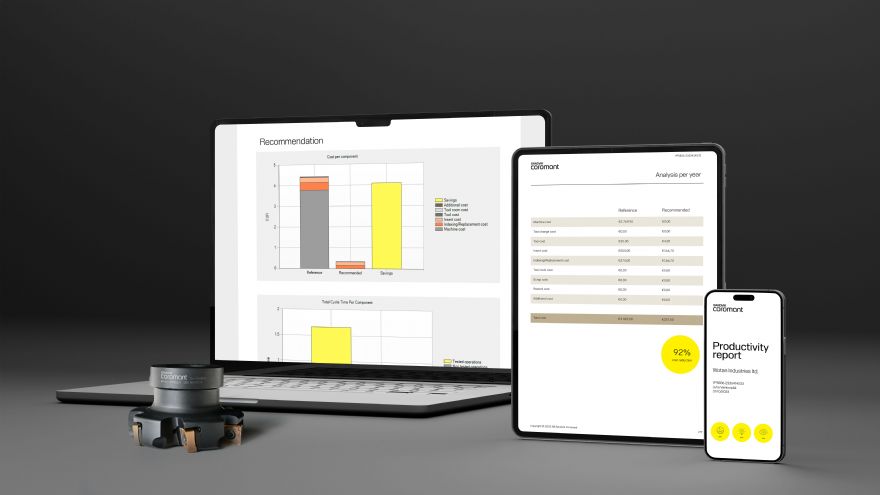
Patrik Eurenius, head of Sustainability and EHS (environmental, health and safety management) at global metal-cutting-tools and manufacturing-solutions company
Sandvik Coromant, which has a UK base in Halesowen, says that while being data driven is the ambition of many manufacturers, he wonders how many are measuring their sustainability credentials. In this article he outlines the importance of measuring manufacturing sustainability and introduces the company’s newly launched analyser tool.
Mr Eurenius says that historically, the way companies measure sustainability has been subject to accusations that it is ‘fluff rather than fact’, because sustainability metrics have not been held in the same regard as other business metrics, such as financial data. “However, businesses that focus on sustainability tend to see great rewards, and embedding metrics such as waste generation, carbon emissions, and energy usage into business strategy is essential to meeting customer demand, regulatory requirements, and investor preferences; and while research published by the
World Economic Forum showed that 90% of executives believe sustainability is important, only 60% of organisations have sustainability strategies in place.”
To help its customers capture, measure, and use their data, Sandvik Coromant is now offering its ‘Productivity Analyser’, which can illustrate the direct and indirect benefits of ‘smart machine tooling’, such as increased productivity, higher rates of return, and increased machine utilisation. “Customers receive a detailed breakdown of their tool use and its impact on their operations. Data is delivered through a reporting system that outlines the exact savings customers can make by using Sandvik Coromant tools and features suggestions for further improvement.
“In 2023, the Sandvik Coromant sales team created 6,096 productivity reports that, in total, have helped customers save 1,948 million hours of production. The company is now adding new features into the tool, features that are designed to help customers measure their energy consumption and their carbon footprint. The analyser will feature a new page of sustainability data, including the energy consumption per component in kilowatt hours (kWh), the energy consumption per year, and the amount of CO
2 emissions generated each year.”
Additional test parameters“To help determine these metrics, Sandvik Coromant will be adding some additional test parameters to its analysing process, including: efficiency measured by the amount of energy input of the spindle used for cutting processes; the price of energy in the manufacturer’s local area and the carbon intensity of that energy; the amount of power required to run a machine outside of its normal cutting requirements; geometrical data on tools; and the material hardness of the machined component.”

Mr Eurenius says that the Productivity Analyser then sends this test data to the Sandvik CoroPlus Tool Guide, where the calculations are made and the sustainability results sent back to the analyser. “We can then give customers exact figures on energy consumption (kWh), energy cost savings, and CO
2 emissions; and adding sustainability data is possible for any new tests run through the Productivity Analyser, or for existing ones that have already been created.
“In one test case, when analysing the performance of a leading automotive manufacturer, the sustainability analyser helped facilitate a 15% increase in productivity by making a deep analysis into the customer’s machine costs, tool costs, energy costs, total emissions and several other key metrics. We were able to take the customer’s production data and subsequently recommend, in this instance, a reduction in energy consumption per component from 0.92kWh to 0.71kWh; and equipped with this data the customer can make better informed decisions to reduce its carbon footprint. With this level of insight into their operations, customers will be able to better understand the impact of their production.
“However, while it is no secret that manufacturing industry must act to reduce its carbon footprint, little can be improved if it is not measured correctly. Having a true, data-driven picture of where a manufacturer is right now will help guide them to where they need to be in a ‘net zero’ future. Offering customers the ability to measure the emissions output of their machining operations means we can deliver the foundations for a more sustainable future.”